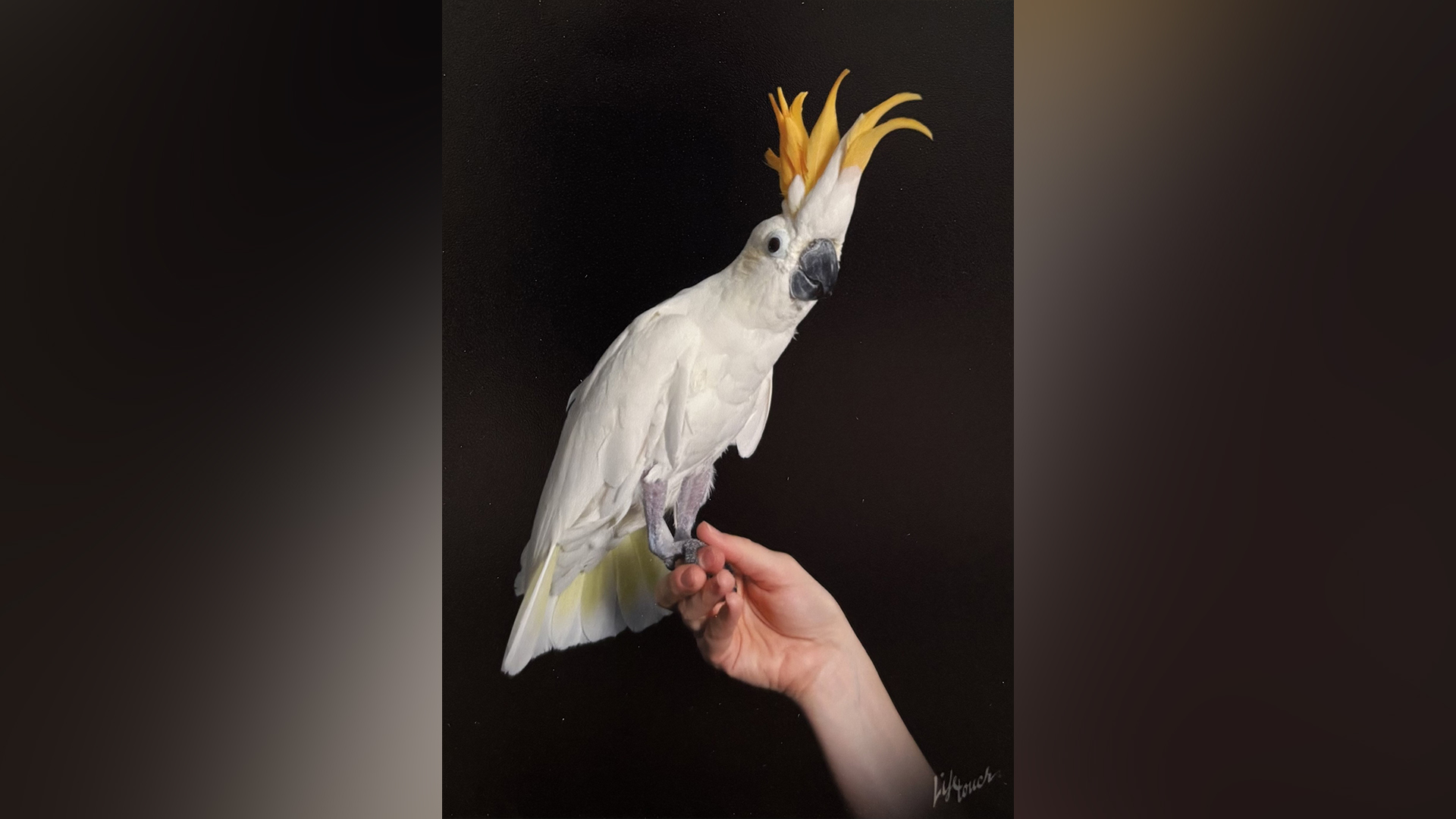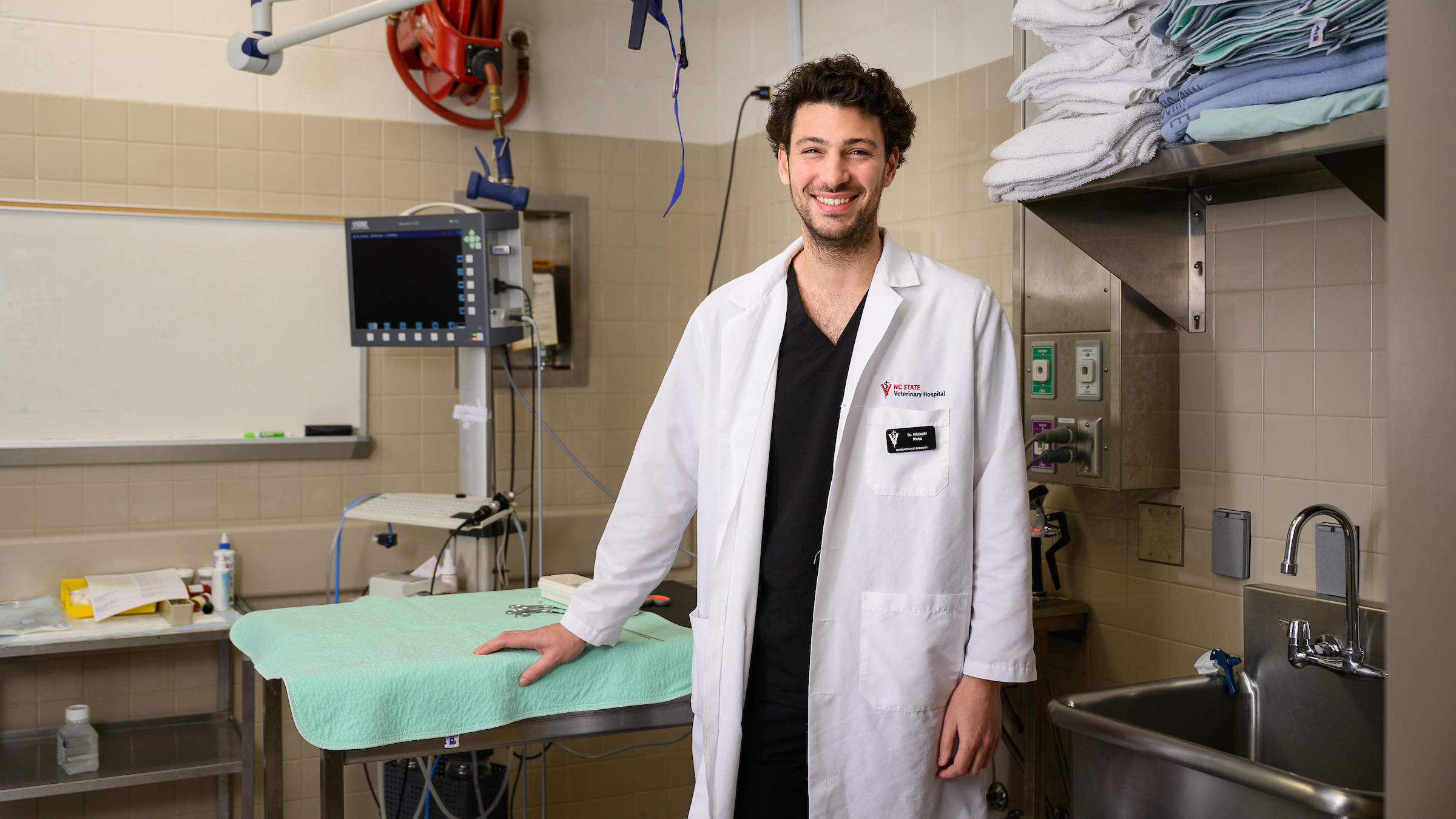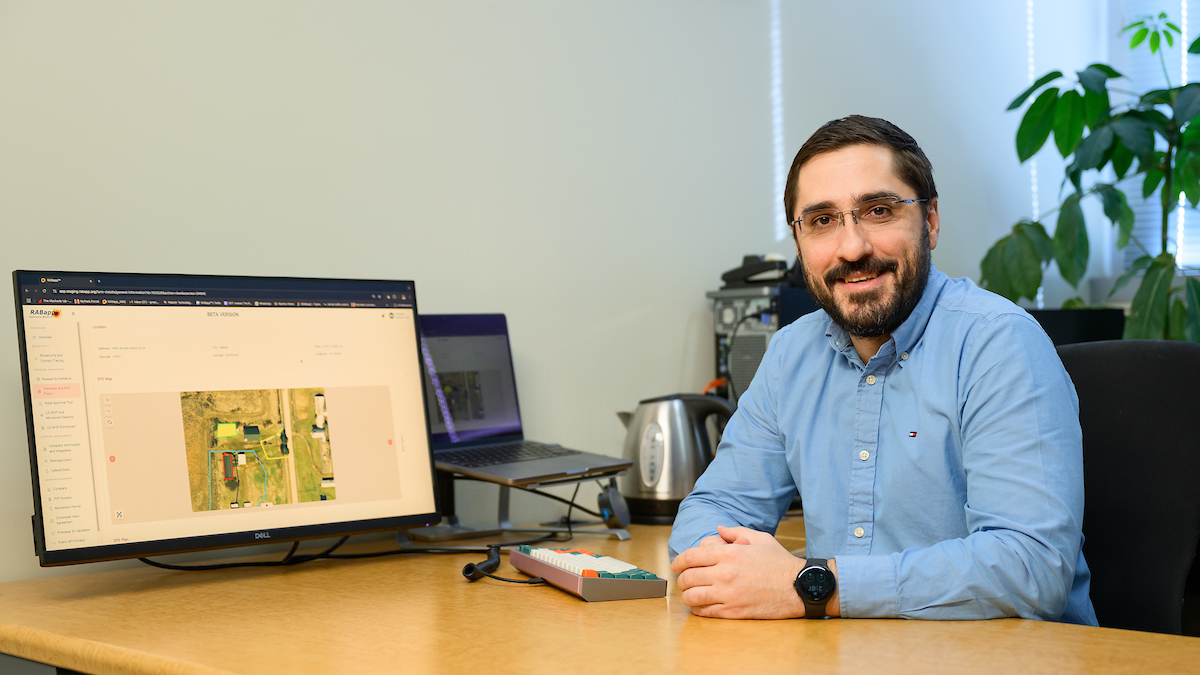Cataract surgery saves Tula
By Monica Young | Special to the Winston-Salem Journal
Not long after Harvey Blake, a horse breeder in McLeansville, bought a new stud horse from a friend in Kernersville, two Appaloosa foals were born. They were blind.
The fillies ran into fences and could not navigate the creeks and pastures on the farm, Blake said.
“It was pitiful. It was just heart-wrenching,” he said. “One day one of them was standing in 6 to 8 inches of water in a creek just whinnying. I had to go lead her out. The vet told me that I either needed to spend the money to get their eyes operated on or put them down.”
Blake couldn’t afford the surgery, not at $4,500 per eye per horse. Then one of the baby horses died from exposure or dehydration.
As he lined up a backhoe to dig the grave, he decided to put the other horse down, too. But his twin 17-year-old daughters, Eva and Anna, begged him not to let the remaining filly die. Blake said that the girls’ mother had died in 2008, and the thought of having the little horse put to sleep was just too much for the high-school seniors.
So Blake called the previous owner of the stallion, Linda LaRue, who persuaded him to call Horse Education Rescue Organization, a volunteer horse rescue group also known as HERO. Stephanie Rideout Danner, owner of Dusty Horses Farm in Hamptonville, specializes in blind horse rescue and works with HERO as well.
Blake sent the mare, named Carol, and her surviving filly, Tula, to Danner.
“Thank God for HERO,” he said.
Born with cataracts
Tula’s blindness was caused by cataracts. From birth, her pupils were hazy and blue rather than clear and healthy.
Last week in Raleigh, just down the block from the State Fair, veterinarians at the Large Animal Clinic of N.C. State University’s School of Veterinary Medicine performed ocular surgery on Tula. Afterward, Tula and Carol shared a stall at the clinic.
Even though Tula is old enough to have been weaned, Carol still allows Tula to nurse. People who work with the two horses think Tula, who is now 500 pounds, is nursing more for comfort and security than nourishment.
Dr. Julie Hempstead, a first-year resident in the School of Veterinary Medicine, said the ophthalmology department admits two or three horses born blind each year.
Appaloosas are one of a few breeds that can have cataracts present at birth. Hempstead said that no true cause has been identified. Rarely do breeders invest in the surgery to correct the horses’ vision.
Hempstead said that before the surgery, Tula had no vision. Just days afterward, there were signs that she did. Tula blinked and moved her head back when a hand was waved in front of her face. Her eyes retracted, a sign of intact vision.
“This is the first blind baby we’ve gotten (to rescue). Usually, breeders euthanize horses born blind,” said Danner, who had an Appaloosa go blind when she was a young girl. She kept the horse, her first venture into blind-horse rescue.
In her work to help Tula, Danner teamed up with Pat Land, another horse lover also involved in equine rescue and rehabilitation. Land, who once had 38 rescue horses on her farm in Mocksville, now has 20.
From the filly’s earliest days, Land was struck by Tula’s intellect.
“Even blind, Tula is brilliant with an incredible personality,” Land said. “Her mother is incredibly cooperative in how she lets us work with Tula.”
The price of rescue
Typically, people involved with equine rescue have caps on what they are able to spend on rehabilitation.
The standard amount is about $2,000 a horse during the horse’s lifetime. Danner said that usually by the time she gets a blind horse, it has no chance of regaining its sight. She said she’s accumulated several blind older Appaloosas through the years and currently has four at her farm.
Tula was different from the start, though. With proper care, Tula can live with sight for the next 30 years. Tula’s surgery cost $8,000, and a group of supporters is hoping to raise that, plus an additional $2,000 for her follow-up care.
N.C. State’s Equine Ophthalmology Service — there are 28 colleges of veterinary medicine in the United States, according to the Association of American Veterinary Medical Colleges — makes use of replacement lenses invented at the school by Dr. Brian Gilger.
David Green, director of communications for the School of Veterinary Medicine, said Gilger has pioneered many ophthalmologic procedures and developed standards used worldwide.
“This particular issue is reflective of national issues because care is so expensive for horse owners,” Green said.
“So many people say that they didn’t know you could keep a blind horse. We want to raise awareness that a blind horse doesn’t have to be thrown away,” Danner said. “They just need the right environment. We want Tula to be an example that horses can be helped.”
Tula will undergo four to six months of treatment and checkups at the clinic. During recovery, she will stay at Davie County Large Animal Hospital in Mocksville with her mother. Her attending veterinarians, Dr. Jim Meeker of the hospital and Dr. Gail Waldman of Rivendell Large Animal Hospital, have donated their time and care.
Her caretakers said they don’t know what Tula’s future holds after her recovery, but they are hopeful that her story can be told to educate people that blind horses have value, too.
 Tula’s surgery protocol
Tula’s surgery protocol
- Tula is placed under general anesthesia.
- A regional nerve block is performed to provide local analgesia.
- Periocular tissues are clipped, globe surface aseptically prepared.
- A small incision is made in the cornea.
- The front of the lens capsule is carefully removed.
- The lens material is aspirated out of the eye.
- A synthetic, equine-specific, intraocular lens that is designed at the NC State CVM is placed within the eye.
- The corneal incision is closed with absorbable sutures.
- An eyelid catheter is placed in the upper eyelid in order to provide topical medication post-operatively.
- Tula recovers in a padded stall.
The cataract in Tula’s right eye reflects the light prior to her surgery at the NC State University College of Veterinary Medicine’s Veterinary Teaching Hospital. Journal photo by Lauren Carroll


